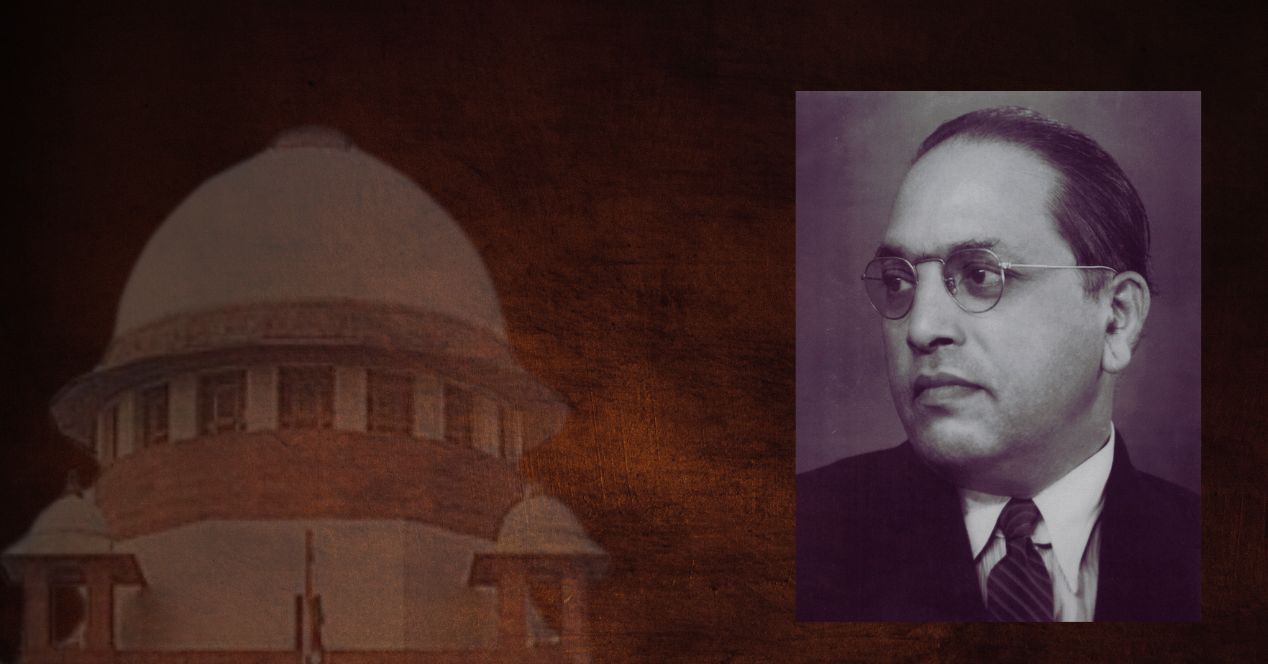News
When Dr Ambedkar argued in the Supreme Court

It’s the weekend of Dr B.R. Ambedkar’s 133rd delivery anniversary so we peeked into the one matter he’s recorded as having argued within the Supreme Court docket.
The yr was 1952. Ambedkar had resigned as legislation minister solely just lately. One of many hottest matters of the day was land reform, which had led to a number of the Supreme Court docket’s earliest choices on basic rights. In State of Bihar v. Kameshwar Singh, Ambedkar was arguing for a batch of zamindars from Uttar Pradesh.
It comes throughout as an anomalous selection of consumer, given his regular document of opposing dominant caste pursuits in his Bombay Excessive Court docket follow. The historian Rohit De has steered that Ambedkar partly took up the case as a result of it was profitable.
In a earlier case, the Supreme Court docket had upheld the First Modification, which protected laws associated to land reform from judicial assessment. In Kameshwar, Ambedkar and his fellow counsel needed to assume up a brand new path to problem the takeover of their purchasers’ land. Ambedkar argued that the obligatory acquisition of property with out public necessity and with out simply compensation went in opposition to the “spirit of the Structure.”
Right here’s how the judgement summarised Ambedkar’s competition: “The Structure, being avowedly one for establishing liberty, justice and equality and a authorities of a free individuals with solely restricted powers, should be held to include an implied prohibition in opposition to taking non-public property with out simply compensation and within the absence of a public function.”
This competition was not accepted in Court docket however De has argued that it sowed the seeds for the acknowledgement of the Primary Construction doctrine in Kesavananda Bharati in 1974. The thought of the ‘spirit’ then knowledgeable judgements that went in opposition to the chief through the Emergency and deepened the ‘due course of’ safety in opposition to Article 21 violations.
It’s thrilling to ponder that the important thing architect of the Structure was most likely one of many first to deliver up its ‘spirit’ in entrance of the establishment tasked with being the doc’s ultimate interpreter. It was an early acknowledgment that, regardless of the Indian Structure’s prodigious size, that means must be poured into it every now and then.
It’s not a uniquely Indian evolution. Within the US, as an illustration, the textual content of the Structure has turn out to be quieter and extra terse over time. Its predecessor, the Massachusetts Structure of 1780, was a verbose doc, with articles detailing the “origins and function of society and authorities” and the “character” of elections and establishments. In distinction, lawyer Christopher C. Demuth calls the current US Structure a “matter of truth account” that’s “strictly enterprise.” In 1819, Chief Justice Marshall, in McCulloch v. Maryland, steered it was on the judiciary to fill these silences. What was being examined must be “in line with the letter and spirit of the Structure,” he stated.
Tutorial David Schwartz has written that the US Structure’s ‘spirit’ has always modified over 200 years since McCulloch. This fluidity is what drives the undertaking of transformative constitutionalism. It’s additionally what makes the undertaking weak. If our Structure is silent, for instance, about investigating businesses past acknowledging their existence, who controls how these silences are crammed?
The ‘spirit’ has all the time been political. Today, it’s relied on to argue each in favour of and in opposition to a brand new Structure. Mapping the glimpse supplied by Kameshwar to the Ambedkarite motion conveys the sense that the ‘constitutional spirit’ could not have been an abstraction of excessive authorized thought. In photos, rallies and oral cultures handed down in blue, the spirit is mirrored in something that creates justice for the individuals.
This text was first featured in SCO’s Weekly publication. Enroll now!
SUBSCRIBE!
-

 News2 weeks ago
News2 weeks agoPushpa 2 teaser release date revealed: Here are 5 things you should know about Allu Arjun’s upcoming film
-

 News2 weeks ago
News2 weeks ago156.7kph: LSG pacer Mayank Yadav shuts Chinnaswamy crowd with fastest ball of IPL 2024
-

 News2 weeks ago
News2 weeks agoTips For Parenting A Child With Autism
-
News2 weeks ago
CTET 2024: Registration ends today, candidates can apply at ctet.nic.in for CBSE CTET July exam
-

 News2 weeks ago
News2 weeks agoWhat is Havana Syndrome, the Mysterious Illness Linked to Russia’s Intelligence Unit? Symptoms Explained
-

 News2 weeks ago
News2 weeks agoWorld Autism Awareness Day: Vattenfall IT is a role model
-

 News2 weeks ago
News2 weeks agoRiyan Parag gets compared to Suryakumar Yadav after years of trolling and unwanted hatred in a dream turnaround | Cricket
-

 News1 week ago
News1 week agoCongress Leader Sanjay Nirupam Conunterattack After Expelled From Party Over Anti Party Statement – Amar Ujala Hindi News Live
